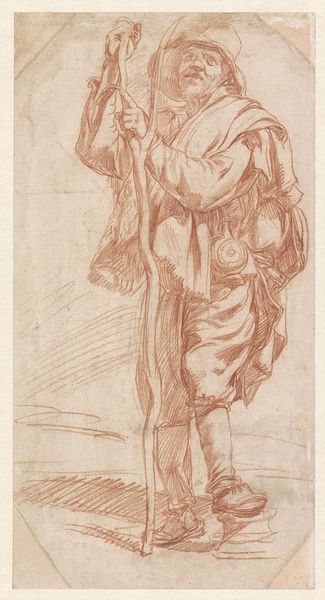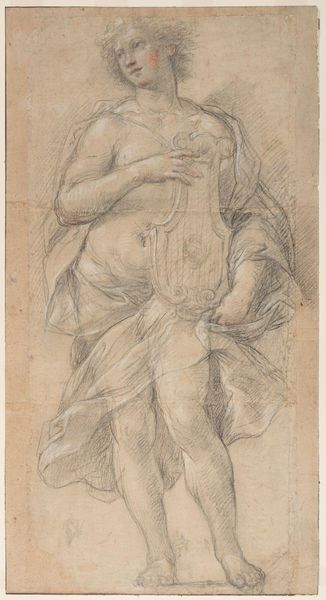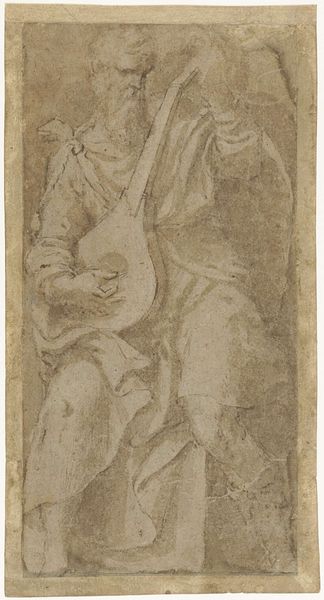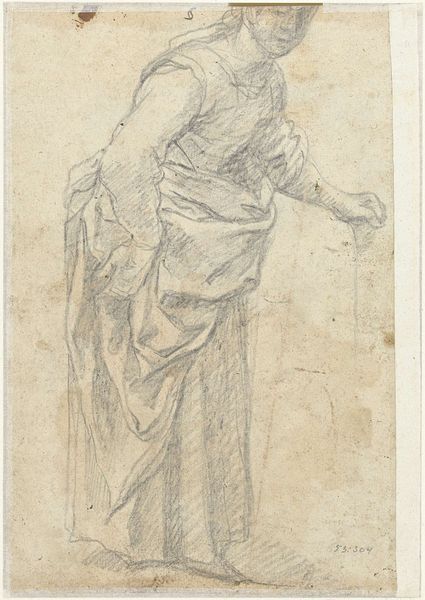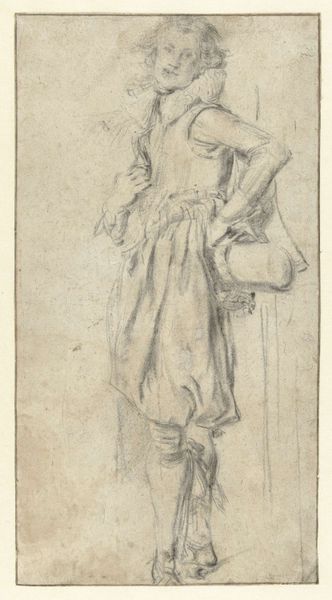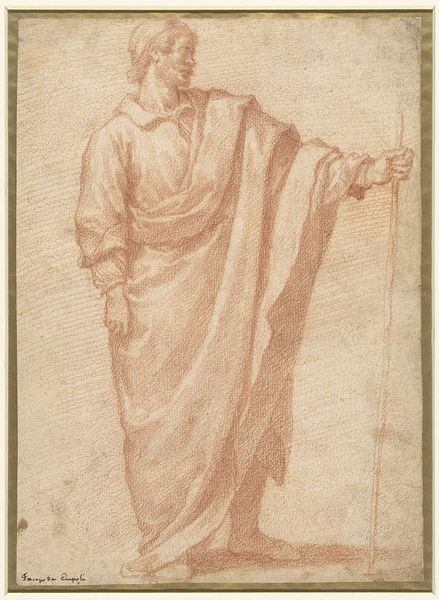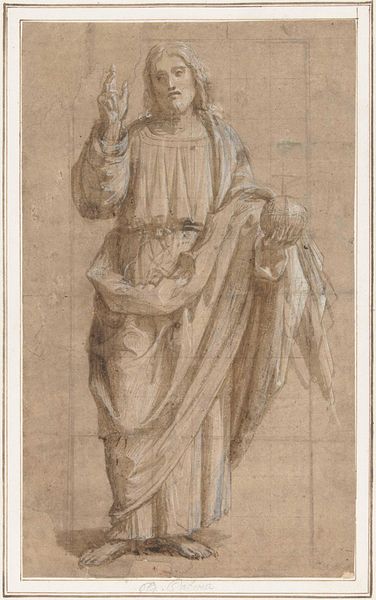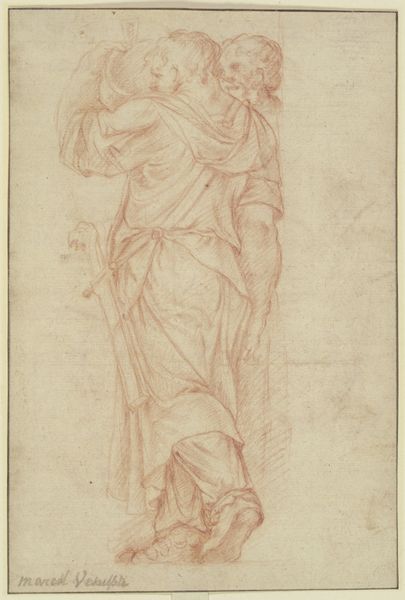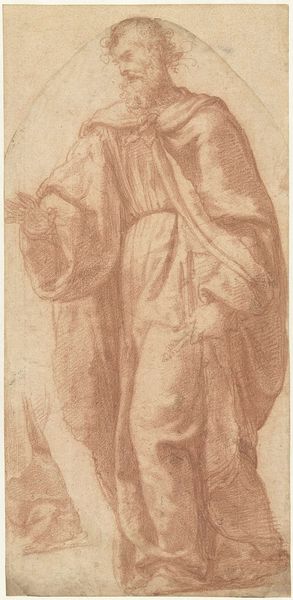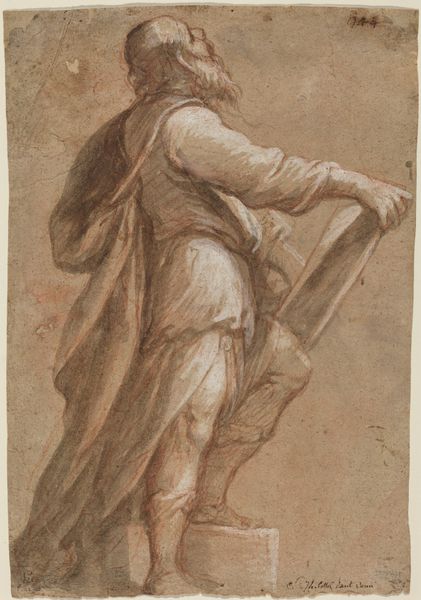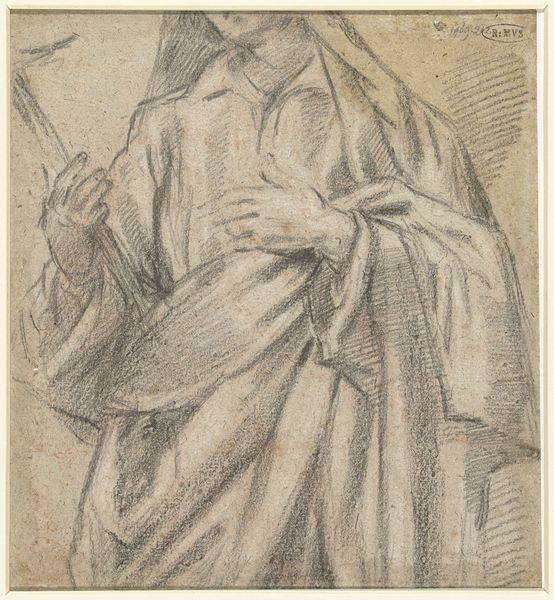
drawing, pencil
#
pencil drawn
#
drawing
#
charcoal drawing
#
figuration
#
11_renaissance
#
pencil drawing
#
pencil
#
academic-art
Dimensions: height 225 mm, width 118 mm
Copyright: Rijks Museum: Open Domain
Editor: This drawing, "Study of an Angel with a Lance" by Simone Peterzano, from sometime between 1550 and 1600, is striking in its materiality. The layering of pencil and charcoal gives the angel a tangible, almost sculptural, presence. What’s your read on this work? Curator: It’s interesting to consider this drawing in the context of Peterzano’s workshop. How much of the work would have been done by Peterzano himself and how much by his assistants or students? The very concept of "originality" is challenged when we start looking at workshop production, isn't it? And what sort of labor went into grinding pigments for the charcoal, making the pencils... and from where did these materials come? Editor: That’s a fascinating point about the labor involved! The physicality of producing those materials hadn't occurred to me. It sounds like art production was more of a collaborative process than I realized. Curator: Absolutely! The Renaissance workshop was a complex economic entity, with hierarchies of labor and distribution of tasks. Peterzano’s drawing should be understood not just as an aesthetic object, but also as a product of this particular system. What do you notice about the quality of paper he employed, for example? What might its availability have meant at the time? Editor: It looks like a fairly rough paper… So it may have been more accessible, used for studies rather than presentation pieces, maybe allowing for experimentation in the workshop setting? Curator: Precisely. Seeing it as an object produced through collaborative, material processes rather than the sole act of ‘genius’ allows us to situate the work differently, grounding it in the material reality of its creation. Editor: I never considered the material and collaborative aspect of older drawings, but now I understand that a materialist view adds more depth and appreciation of the piece, rather than thinking of drawings as an act of singular vision alone. Curator: Exactly, and these details speak volumes about how, and by whom, art was made and distributed in 16th-century Europe.
Comments
No comments
Be the first to comment and join the conversation on the ultimate creative platform.
